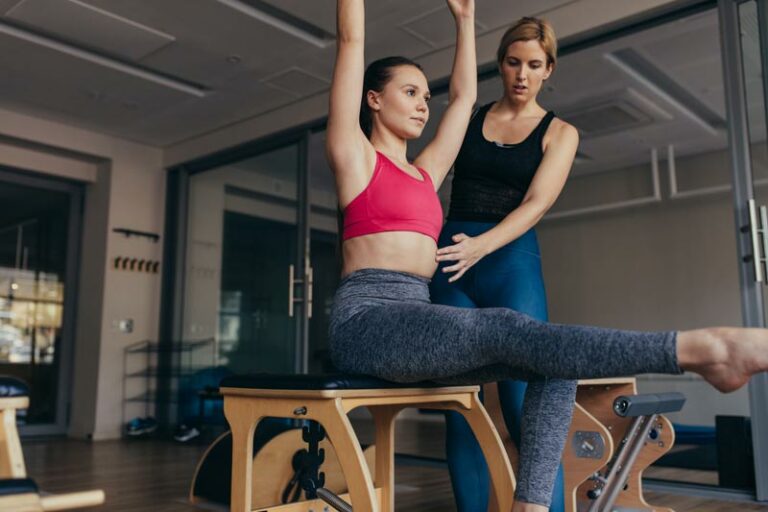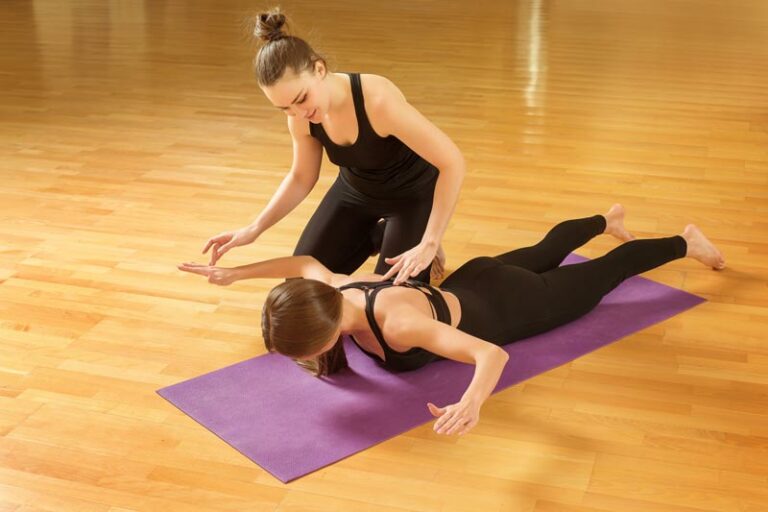Do you ever wonder, during your busy days, if you are sitting and standing in a way that best supports your body? Do you think about your posture – the silent architect of your well-being that influences your life in a myriad of ways?
Many of us carry misconceptions about what constitutes correct posture, often influenced by outdated ideas. As we unravel these myths, we also explore solutions for correcting bad posture habits, including the transformative benefits of Pilates-based physical therapy. Pilates-based PT is a powerful tool designed to facilitate optimal body alignment and foster a healthier, more functional life.
Defining correct posture
Is my back supposed to have curves?
The short answer – Yes!
The truth lies in understanding and appreciating the natural curves of our spine: a slight inward curve in the neck, a gentle outward curve in the mid-back, and another subtle inward curve in the low back. Contrary to the belief that a completely straight posture is ideal, these natural curves contribute to a balanced and healthy alignment.
There can be too much or too little curve, however, which has the potential to lead to problems that can cause pain and dysfunction in the body.

Why, then, does sitting or standing in poor posture feel most comfortable?
The allure of poor posture, a true paradox, can be attributed to a variety of factors. Habits formed over time, such as slouching or hunching over, become ingrained and give a false sense of ease. Sports-specific training can imprint bad habits on athletes who inadvertently adopt poor posture for the sake of optimized performance. Additionally, compensatory postures adopted after injuries may contribute to the misconception that these positions are more comfortable.
Moreover, outdated information about correct posture is compounded by a lack of understanding how to move properly as well as a lack of muscle strength, which all further perpetuates the allure of poor posture.
How do I correct poor posture habits?
Addressing poor posture requires a practical and systematic approach. Seeking guidance from a physical therapist is a crucial first step. As musculoskeletal experts, PTs can analyze movement patterns, identify areas that need improvement in mobility or strength, and provide personalized recommendations for sitting and standing postures. Implementing changes involves consistent practice of new, correct postures throughout daily activities, gradually replacing old habits with healthier ones.

While every Doctor of Physical Therapy can help with posture correction, those who are specialized in Pilates-based PT provide a path to optimal posture.
How can Pilates-based physical therapy help with posture?
An effective avenue for achieving and maintaining correct posture lies in Pilates-based rehabilitation exercises. Pilates introduces five basic principles that form the backbone of optimal posture.
- Breathing
- Pelvic Placement
- Rib Cage Placement
- Scapular Movement & Stabilization
- Head & Cervical Placement


Through the transformative power of Pilates-based PT, you’ll learn about strength with length – emphasizing the combination of strength and lengthening in movements. You will also gain an understanding of how to fine tune movements, as you learn to use very specific muscle groups and joints. The Pilates approach to exercise not only strengthens both large and small muscle groups but also focuses on enhancing core strength and supporting the spine. Through whole-body exercises, Pilates fosters a holistic understanding of the body’s interconnectedness.
When should I seek a PT evaluation for posture?
Understanding and maintaining correct posture is foundational for overall well-being. For those grappling with uncertainty about their posture and suspecting negative effects on their bodies, seeking a professional evaluation, especially from a Pilates-focused physical therapist, is paramount. These experts play a pivotal role in assessing and addressing posture-related concerns, offering tailored guidance for improvement.
As we prioritize the well-being of our bodies, the pursuit of correct posture through Pilates-based physical therapy becomes not just a physical practice but a holistic commitment to a healthier and more functional life.

Start your physical therapy journey today.
As PTs, we know the importance of movement for overall health and well-being. As you work toward the things you want to achieve, consider the many ways physical therapy can help.

